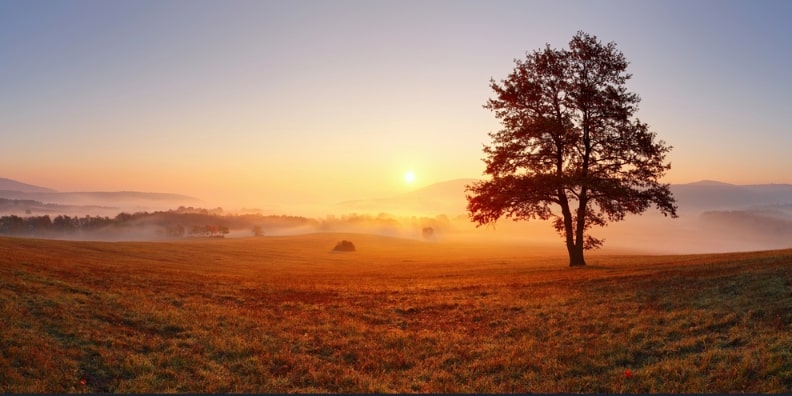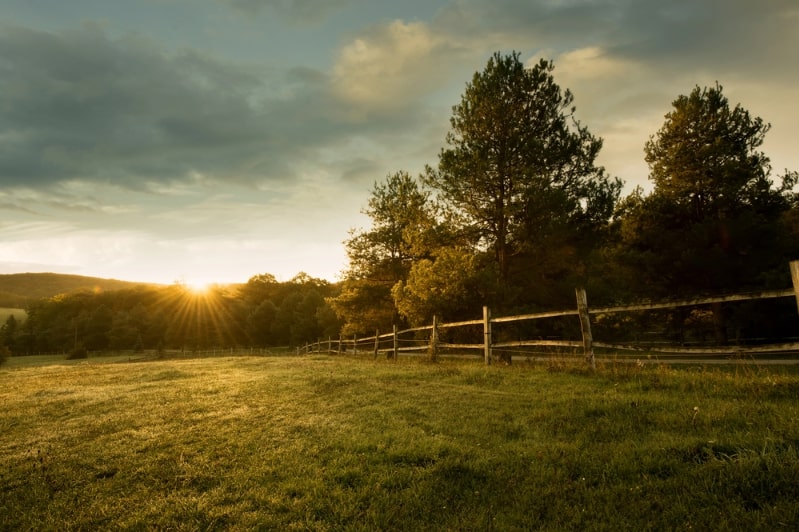Introduction: In this article, Katie Rebecca Garner describes how helpful land records can be for your genealogy research, and provides links to find land records. Katie specializes in U.S. research for family history, enjoys writing and researching, and is developing curricula for teaching children genealogy.
As early as the 1600s, the availability of land drew many people across the ocean to the New World. As the U.S. expanded westward, open land drew people toward the frontier. Land ownership was a big deal, especially before 1860. Most white adult males back then owned land.

Photo credit: https://depositphotos.com/home.html
All land transactions left a paper trail. Because land meant wealth for our ancestors, it was important to keep records of it. Land records assure that property belongs to its rightful owner and indicates prior owners. Probate records show how the land was passed on to heirs. Court proceedings record land disputes. Land even influenced the keeping of marriage records. A widow was entitled to a third of her late husband’s property, so towns and counties had to keep track of who married whom.
Another advantage of land records is that they are less likely to be lost than other record types in the event of a burned courthouse. This was because landowners were encouraged to reregister their deeds after a courthouse was destroyed. The landowner always kept a copy of the deed, which could be recopied after the courthouse’s copy was destroyed.
The first settlers in an area received or bought their land from the government or proprietor. The settler would make an entry for a claim of land and they’d be issued a warrant. The settler would then hire a surveyor to survey the land and draw a plat. After the survey was completed, a patent was issued. Anytime the land was sold to anyone else, a deed was created.
How the land was surveyed depended on if it was a state-land state or a federal-land state. State-land states used the metes and bounds system, which relied on landmarks and often had odd-shaped pieces of land. Federal-land states used the township and range system, which indicated how far the land was from a central meridian point and assigned numbers in a gridded system, resulting in square-shaped pieces of land.
How Land Records Can Help in Your Research
Piecing together multiple land plats in an area can help you see who all the neighbors of your ancestors were. Neighbors often included extended family and close community members. Additionally, it was common back then for people to marry their neighbors. In the case of immigrants, their neighbors in America may have also been their neighbors in the old land.
Deeds give the land description and the names of the persons buying and selling the land. Not only that, they often list neighbors and relatives. Sometimes they indicate who the seller had previously bought the land from. Occasionally, deeds will list heirs of the owner, including married daughters; where the buyer came from; or where the seller moved to.
In estate settlements where multiple siblings inherited the land, it was common for one sibling to buy out the others. This land transaction would involve multiple people selling the land. In the index, the first person was listed along with “et al” which means “and others.” Records of these transactions can reveal sibling relationships.
It was mentioned earlier that a widow was entitled to one-third of her husband’s land after his death. This is called the “dower right.” When a married man sold land, the court would ask the wife if she released her dower right. If the wife did not, she could sue the buyer for her portion of the land back after her husband’s death. If the wife released the dower right, her name was written on the land record – sometimes her maiden name.

Photo credit: https://depositphotos.com/home.html
How to Find Land Records
To search for land records, start by finding the grantee (buyer) or grantor (seller) indexes (or both). These can be found in the FamilySearch Wiki page for the county or state your ancestor lived in, or by searching the FamilySearch card catalog.
If the land record collection is indexed, you can search for your ancestor’s name. Most of the digitized land records are not indexed with complete surnames, so you may need to browse the collection. For this, it helps to understand how the clerks organized the land records. There are several different index systems. Some are alphabetized only by the first letter of the surname. Some are alphabetized by the first three letters of the surname. Some are grouped into five-year increments. Being able to identify how the collection is indexed will make it easier to browse for your ancestor’s record. It will also tell you how far you may need to browse before determining that your ancestor is not in that collection.
When you find your ancestor in the land records, the entries will indicate whom they bought land from or sold land to, along with the deed book number and page number the transaction is recorded on. You can then use that information to find the book in the collection (usually another digitized microfilm when searching in FamilySearch).
If your ancestor obtained land from the federal government, you can find their records on the General Land Office website.
A Case Study
Consider Hastings was married to Phebe Page. The client wanted me to trace Phebe’s maternal line. Phebe’s mother was purportedly Hannah Peirce. The proof of Phebe’s maiden name was shaky and there was no proof of her parents. To find proof of her maiden name and family, I decided to do FAN (Friends, Associates, Neighbors) club research for Consider Hastings, starting with land records.
Consider Hastings lived in New Salem, Massachusetts. The town is in Franklin County, which had once been part of Hampshire County. The county split happened shortly after Consider’s death. I checked the land indexes for both counties on FamilySearch and found land transactions for him in the Franklin collections.
In the deeds where Consider Hastings bought and sold land, he had witnesses and neighbors who were Pages and Peirces/Pearces. This gave me some names of people to research to determine if they were related to Phebe.
By finding the various land records of your ancestors, you can learn more about them and find clues about family relationships.
Explore over 330 years of newspapers and historical records in GenealogyBank. Discover your family story! Start a 7-Day Free Trial
Note on the header image: farmland. Photo credit: https://depositphotos.com/home.html
Resources:
- https://familytreewebinars.com/webinar/metes-bounds-land-plats-solve-genealogical-problems/?search=land
- https://familytreewebinars.com/webinar/comparing-plats-of-land-with-deeds-and-grants/
- https://familytreewebinars.com/webinar/land-records-solve-research-problems/
- https://familytreewebinars.com/webinar/u-s-land-records-state-land-states/
